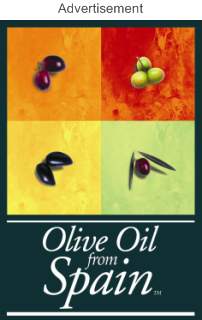In fact, the act of making soba noodles properly has traditions of its own. The designation of “handmade” as opposed to “machine-made” soba still carries weight among Japanese who insist on the freshest ingredients and attention to detail in their food. For that reason, soba chefs train for years to make the perfect noodle to the exact specification that tradition, if not culture, demands. For example, the Japan Agricultural Standards Board regulates the proportion of wheat that can be used in the buckwheat mix and still call the resulting noodle soba. By law, all soba has to be a minimum of 30% buckwheat, but higher buckwheat content is more desirable. But it is the consistency of the buckwheat which creates the need for a mixture in the first place: buckwheat, unlike other grains, has no gluten in it. Gluten serves as a binder in wheat and makes it easy to make into grain-based items such as bread, pasta, or cereal. For that reason, all soba contains some wheat – most often in an eight-to-two ratio – two parts wheat for eight parts buckwheat. Soba chefs across Japan have perfected the art of the ratio, mixing the wheat and buckwheat in old-fashioned wooden bowls with strong fingers and adding in the water slowly and deliberately. Adding the water to the grain mixture is an exacting process since buckwheat “drinks” moisture faster than other grains.
Rolling Out the Dough
Rolling out the dough to create the noodles is yet another way in which soba is steeped in tradition that stems from hundreds of years of practice. Most soba chefs can roll the dough with a series of precise movements of the rolling pin that makes the dough square or rectangular so that when the noodles are cut they are uniform in length but which also results in much less waste of dough. The rolled dough must be precisely five millimeters thick and most chefs have a special gauge against which they measure it before they cut it. Continuing with traditions of the ages, soba knives are huge – even larger in width than butchers’ meat-slicing knives. The chefs fold the dough over with a bit of special flour called uchiko between the layers to prevent sticking and then slice the noodles precisely 1.6 mm wide. To be sure, each chef has his own measurement, but it is always uniform. The cut noodles are put in a large strainer, boiled for precisely sixty seconds in a huge pot and then immediately immersed in ice water to stop the cooking.
Complete Nutrition
The nutrition of soba noodles is incomparable. The noodles themselves are low in fat, and high in both fiber and protein. They are packed with vitamins such as C, B and E. Even in ancient times in Japan, buckwheat was known for its ability to flush out the digestive tract and provide spurts of energy for workers, keeping them healthy for working. In addition, up until the early twentieth century in Japan, people who ate too much rice suffered from beri beri, an illness of the central nervous system that is associated with a lack of the vitamin thiamine.
|
Soba is rich in thiamine so that the people quickly found that substituting some soba for a portion of their rice during the day kept them healthy. Though both are long and thin, there is no way to even compare soba with pasta ? the health benefits of the Japanese noodle are far above any connotation of American-style pasta.
Soba carries with it the air of celebration, and it is used for a number of occasions. For instance, though the practice is falling out of favor now, whenever Japanese people moved into a new home, they would give their neighbors soba to symbolize a long and healthy neighborly relationship. In addition, many Japanese eat soba before midnight on New Year's Eve as a symbol of the hope for a long and prosperous new year. When eating individual strands of soba, you must slurp the entire noodle into your mouth and avoid biting at all costs. Biting is seen as an interruption of the intended symbolic longevity -- be it of life or a relationship.

When the chef’s hat comes off, it is perhaps his community
support that Trotter is known for best. The awards, accolades and
recognitions for his philanthropy nearly rival the awards he has
won for his food and restaurants and range from the culinary
community at large to the federal government. "I do a lot because I
want to do a lot and I am in a position to do a lot," Trotter said.
"But I think anyone who is drawn to this world of food, wine and
service—it’s kind of in your nature to want to do things for
people. You’re doing one of the most intimate things you can for
another person in feeding them."
Of course, eating soba itself has its own pomp and circumstance in Japan; there are definitive right and wrong ways to do it. Most elements are common to all soba shops in Japan. For example, hot versus cold with regards to soba is only somewhat a matter of the diner's preference; in the winter people eat it hot but when the weather is warm, they eat it cold. In the summer, most Japanese eat the soba cold with a dipping sauce called tsuyu, which is soy-based with sweet mirin added to it. In the autumn and winter, they eat soba in a hot broth that is Dashi-based -- a type of fish stock. If eating the noodles cold, before the soba arrives, diners are given a ceramic dipping cup, which looks a bit like a squared-off teacup without the handle. In some shops, diners are given two cruets of dipping sauce, one labeled amai, or sweet, and the other karai, or salty. Next comes a tiny, rectangular dish, which is divided in half, one half with scallions on it and the other half with wasabi and fresh grated daikon, Japanese white radish. The sauce of choice gets poured into the dipping cup and then the wasabi, radish, and scallions are added to taste. Also on the table are two jars of spice, both called shichimi, after the red pepper flakes that are the main ingredient. One jar contains red pepper flakes and black sesame seeds and the other is the red pepper along with white sesame seeds and dried rind of the citrus yuzu fruit. When added to the dipping sauce mixture, it lends a spicy, yet fruity taste, which is an interesting blend of flavors.
Tororo Soba and More...
|











